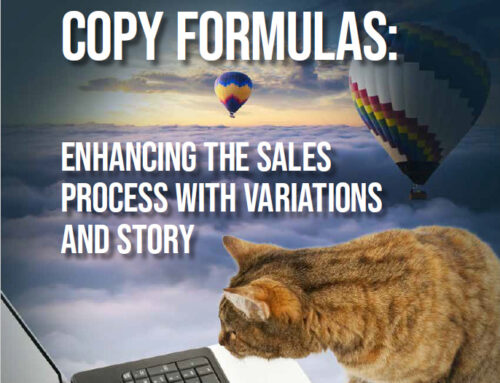Have you tried the “Story Approach” as a Messaging Strategy?
(It has nothing to do with testimonials if that’s what you’re thinking . . .)
It’s an approach for crafting more persuasive sales copy that’s driven by your answers to 7 key questions. Formulating the answers to those questions helps you create your brand “story.”
The Story Approach helps you focus on your target audience — and discover the key points of differentiation that are going to get that audience excited.
The end result is a stronger, more unique, memorable brand promise.
The Story Approach Framework
The particular “Story Approach” we’re going to walk through is from Donald Miller’s book, “Building a Story Brand.”
This Story Approach helps you think of new directions for your overall message, because it challenges you to really analyze the prospect situation and think about what the prospect is going through.
You’ll want to end up with a simple, relevant, repeatable, memorable single statement to summarize the story. That’s your whole brand promise.
The prospect will be the hero in your story (versus your company). Of course, that’s the challenge, because we all tend to want to talk about our company or our products – with a lot of “we” and “our.”
But we want our message to be all about our prospects — because our prospects could care less about our company and our products. They only care about what’s in it for them.
To implement the Story Approach, you’ll answer 7 key questions.
You want to craft a clear statement in answer to each question, that positions you as a trusted guide to solve the prospect’s problem.
Finally, your product or solution should transform your prospects, help them become a better version of themselves or inspire them or change their life. This works both for consumers as well as business prospects.
Answer 7 Key Questions to Guide Your Messaging
The seven steps in the Story Approach are similar to the Sales Process, but they mix things around a bit:
1. What does the prospect want?
Spend some time really getting down to the basic needs of your prospect. Get beyond the product or service you sell, and think about the end result your prospect needs. For example, we sell website creation, copywriting, and website management services.
But that’s not the crux of what our prospects want. They want to generate more leads or more sales cost-effectively. That’s the basic want we should address.
Try to identify a specific desire that you can become known for helping your customers achieve as you go through each of these seven questions.
2. What are the things standing in the way?
Are there problems or challenges standing in the way of that prospect getting what he or she wants? Walk through the decision process step-by-step the way your prospect would, starting with an online search (if that makes sense for your product or service) – and see how easy it is to identify the right websites that might deliver what the prospect wants.
(Questions 1 and 2 combined are similar to the “Agitation” copy variation we talked about last time.)
3. Why are we the best “guide” to solve this problem?
This is where you showcase your expertise and build credibility with your particular prospects.
You might use empathy here: “We understand your situation and we have the expertise to deliver it.”
4. What’s our clear plan of action for the prospect?
Give your prospect clear steps to take. “Here’s all you need to do.”
5. How can we challenge prospects to take action?
What is going to motivate your prospects to take action NOW? Try to reduce the risk with a guaranty as part of your Offer.
6. What will happen if prospects don’t take action?
Remind prospects of what they will miss every day they don’t take action.
7. What is the successful vision of life after the purchase?
Finish your brand story with a view of how great their life will be once they take advantage of your product or service.
Where the Sales Process presents the benefits, pitches the offer, and addresses objections – typically in that order — the Story Approach weaves the benefits and answers objections throughout the message.
So, the Story Approach is really a variation of the Sales Process. How to get started?
Go through the 7 questions and just start writing whatever comes to mind. You want to get ideas down in a draft. Don’t worry about writing copy or finished messaging initially. (This is a great exercise for a marketing team, to come up with a stronger brand promise!)
Then work to hone the words and come up with a single statement in answer to each question.
Next time: a case study that walks through these 7 questions to implement the Story Approach.
Did you miss our first 2 parts:
Need more help with your website content? Our new BEST-SELLING book, “The Results Obsession: ROI-Focused Digital Strategies to Transform Your Marketing” is now available on Amazon!

The book includes 3 chapters on copy strategy, writing specific elements like headlines, and making every word as strong as it can be.
There’s also a chapter on writing website copy, developing the right email strategy, and writing email copy.






Leave A Comment